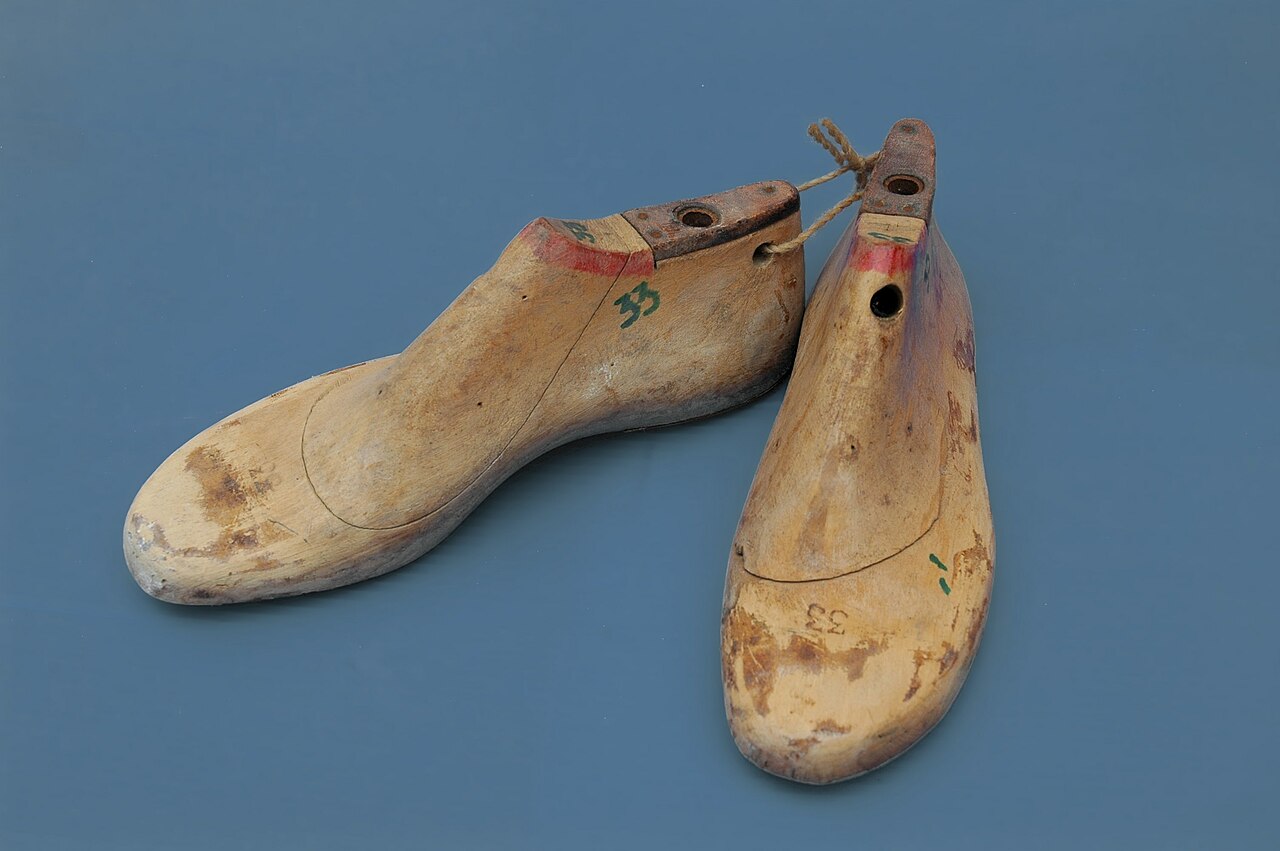
Navigating Online Shopping for Minimal and Barefoot Shoes
It’s always challenging finding your sizing online, especially when it comes to minimal and barefoot shoes.
Why Is The Sizing Hard To Find?
When it comes to minimal shoe brands, they all seem to have their own non-standard sizing, and it can even differ from model to model.
There are several sizing systems used throughout the industry, and lots of resources attempting to make sizing easier that may not give you consistent advice. It can make it harder to figure out what to order no matter how much experience you have with minimal and barefoot shoes. What leads to all of these challenges?
While conventional shoe companies can send a design out to their manufacturers and have them built on standard lasts— aka a model of a foot that isn’t actually foot shaped, like in the photo above— and other existing infrastructure, minimal shoe companies have to start from scratch.
They need to make new lasts in every size, this time shaped like real feet, in order to make a zero drop and wide toe box shoe. This is just one example of where they diverge from conventional shoe manufacturing– a task that requires a bit of trial and error for every new model.
Once they do release new models to the world, people will expect to be able to repurchase the same model in the same size after a few years, so it is very difficult to change the sizing after an item has been released.
Companies who have done a major sizing overhaul have seen sizing confusion repercussions last for years afterwards. This is why you’ll see product pages saying things like “this fits small, please size up” instead of changing the number on the label.
How To Navigate Minimal Shoe Sizing
How do we navigate this situation? The community has realized that shoe fit comes down not only to length and width measurements, but also to the shape of the foot and the volume of the foot.
We’ve come up with ways of talking about feet to communicate our needs. Getting familiar with different ways of describing your unique, three dimensional feet and your preference for how a shoe feels and moves on your foot will help you pinpoint your needs.
Some ways you could describe your feet and shoes:
- Foot length- there are different ways to measure, tracing is usually the least effective as the pen you use or how you hold the pen can make a big difference to the accuracy. We like this method for measuring from Lems.
- Shoe insole length or internal shoe length- this should be slightly longer than your foot to allow room for movement.
- Foot width- almost always describes the width of the ball of the foot (the equivalent to the knuckles area of the hand).
- Arch location- how far back or forward your arch is, how long it is. Ideally your shoes would be the same, but more room is better than not enough here.
- Midfoot shape- shoes might hug the arch/instep and middle area of the foot with a sculpted feel, or they might not follow the contour of the foot like a boxy skater style shoe. Do you prefer one or the other?
- Arch support- are you seeking this or avoiding this? Do you like support to be from the insole or from around the side of the foot and ankle?
- Volume- This term can refer to the height of your feet to bring in the 3D context of your sizing, or to the combination of height and width of your feet as they compare to averages for your foot length.
- Volume adjustability- certain shoe designs increase or decrease the adjustability of how much room is inside the shoe for your feet, such as lacing or stretchy bits. Gusseted boots or slip on shoes might be less adjustable, while lace-up shoes would be more adjustable.
- Heel width- is it similar to the rest of your feet or narrower?
- Heel height and shape- mostly for boots, you want the boot to match your heel and ankle. Does your heel flare out in profile or does it go straight down at the back, for example. You may have a preference for high- or low-cut models due to your ankle height and ankle bone location.
- Footprint shape- from triangular and tapered, to curved like a kidney bean, to straight and rectangular, people have an overall shape to their foot. This is where tracing your feet on paper can be handy to get a sense of your overall shape.
- Toe area shape- where do you need length in the front of your shoes? Just for your big toe/second toe, or for your outer toes as well? This can help you figure out if you need to "size up for width" if a minimal shoe's toebox is a different shape than your toes.
Some of these points will matter to you more than others!
By looking at photos from different angles, videos, and reviews by people who have a similar foot to yours when considering a new model, you'll learn a lot about how to tell if a shoe would work for you or not during your research stage. The more the shoe looks like your foot, the better!
Researching community resources or getting a fitting at a shop like Cool East Market can help a lot with finding the language that will help you shop online. Conventional running shoe stores or foot healthcare professionals may be able to assist too, but you can also look at the shoes you own that you wear the most, and think about what makes them so comfortable for you.
Found a Good Fit? That Helps!
Many minimal shoe lovers find that one brand makes shoes that suit their feet better than others. Once you find your brand or a model you love, you can look at their sizing guide or reviews on social media to see whether their sizing is consistent before branching out into other models.
Another option is to search for reviews comparing a model you know well to a new model or brand you're interested in, such as googling "Xero Prio vs Lems Primal Zen." We do this all the time in the shop and it's so helpful to see real people talking about their different experiences based on their foot types.
Once you know what to search for by getting to know your feet and your preferences, it gets a lot easier to narrow down whose reviews will matter to you.
Drop Us a Line
If you only have access to ordering online, emailing to ask for sizing advice, whether with us or when buying directly from a barefoot brand, can help you access some guidance.
These brands know their shoes really well, and at CEM we spend all day helping people find their sizes in various brands so we get a sense of the comparisons between brands too. It's a good opportunity to bring up questions, concerns, or give feedback too.
What if it Doesn't Fit?
Finally the moment comes: you’ve done your research, but pressing the checkout button is still a risk. Shoe sizing has so many factors that even with recommendations from the most experienced among us, you could still end up with something that doesn’t work for you.
Eventually this happens to everyone, and it can help to know in advance what the brand or store’s return policy is (see ours here).
Check the Return Policy
If you're shopping direct from a minimal shoe brand, you can usually find their return, exchange, and shipping information at the top or bottom of the page.
At our shop, our return and size exchange policies are built to keep our prices as close as possible to supplier pricing while supporting growth for our small business.
By asking customers to cover the return shipping, we avoid having to build the cost of an exchange into our prices and keep our shoes as affordable as possible.
We also have no set time limit on returns and exchanges (within reason) and that flexibility helps our customers who are on a tight budget wait until their next trip to Toronto to drop off a return and avoid shipping costs.
Is It Worth the Risk?
Sizing isn’t an exact science, so ordering online will always be a risk. With a little research, self awareness, and communication, you can decrease the risk of needing to exchange.
If you do end up with a pair of shoes that isn’t working for you, try to sense what aspect isn’t working so that you’ll get more information about the needs of your feet! It’s a useful data point on the way to getting the best footwear possible.
There are always going to be some risks we take in life to get what we want, whether it’s a confession of romantic feelings, asking for a raise, or learning a new skill even if you might feel silly as a beginner.
Taking those chances can lead to some of the most rewarding experiences in life. We’ve designed our store experience to help with sizing as much as we can, and with so many benefits to functional footwear, we believe that it’s a risk worth taking.


